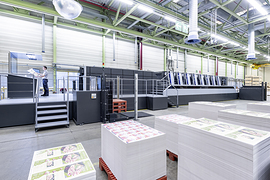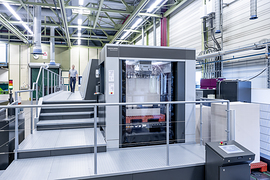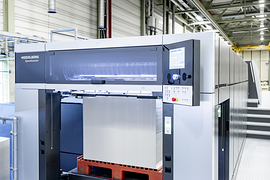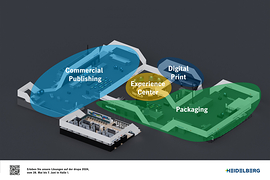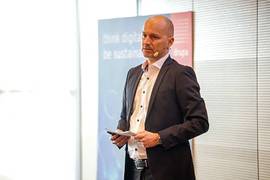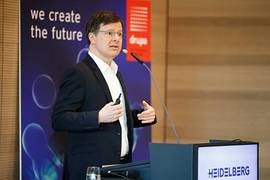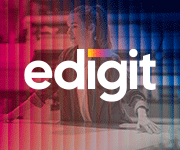"Unfold your potential" with Heidelberg
2 aprile 2024
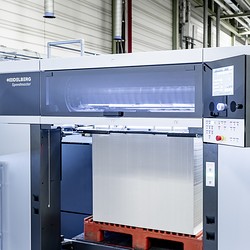
Cost pressures, the skills shortage, and sustainability – Heidelberg is addressing these megatrends with innovations at drupa 2024. Thanks to the innovations being unveiled at drupa, such as the new-generation Speedmaster XL 106, Heidelberg can support its customers with a holistic concept that delivers up to 20 percent higher productivity than the previous solutions.
The printing sector is facing a combination of three challenges – ever-increasing cost pressures, a shortage of skilled workers, and growing sustainability requirements. In response to these megatrends, Heidelberger Druckmaschinen AG (HEIDELBERG) will be presenting numerous innovations under the motto “Unfold Your Potential” at this year’s drupa trade show.
The focus will be on customers and the need for their print shops to optimize the development and leveraging of business potential using state-of-the-art technologies and services.
“Heidelberg has been an industry pioneer in the digitalization of printing for 20 years. Our main goal is to optimize our customers’ entire value chain,” says Heidelberg CEO Dr. Ludwin Monz. “To this end, we have almost fully digitalized and integrated print shop processes, and our solutions at drupa offer our commercial and packaging printing customers maximum efficiency in industrial print production,” he adds.
Thanks to the innovations being unveiled at drupa, such as the new-generation Speedmaster XL 106, Heidelberg can support its customers with a holistic concept that delivers up to 20 percent higher productivity than the previous solutions.
The new Peak Performance generation of the Speedmaster XL 106, world premiere at drupa, can print up to 21,000 sheets per hour. With this new generation, autonomous printing is now also possible in packaging production, thanks to the enhanced Push to Stop concept. This means complex production parameters can now be configured completely automatically in packaging and label printing, too. “We anticipate that a high-volume packaging producer or wet-glue label manufacturer will very soon achieve a benchmark of 100 million sheets per year. This figure represents a 20 percent increase on the 85 million sheets currently being produced by today’s industry leaders,” says Markus Leichtle, Senior Manager Industrial Packaging at Heidelberg.
The key topics in brief:
• How can printing businesses make their production more efficient?
Increasing cost pressures are forcing print shops to make ongoing investments in maintaining their competitiveness – i.e. in higher productivity, enhanced efficiency, and new areas of business. Heidelberg understands the value drivers of customers in the commercial and packaging printing industry. Innovations such as the new Peak Performance generation of the Speedmaster XL 106, with its higher print speed of up to 21,000 sheets per hour, AI-supported assistance systems, and enhanced Push to Stop functions, are making industrial offset printing even more competitive.
Heidelberg will be exhibiting another innovation, too – the efficiency of the Boardmaster is setting new productivity standards in the packaging printing industry. The new Boardmaster is a flexographic web printing system that boasts machine availability of up to 90 percent and a maximum printing speed of 600 meters per minute. Compared with the previous generation, its machine concept dramatically reduces the total cost of ownership in industrial packaging production.
• How can print shops respond to the shortage of skilled workers?
The shortage of labor and skilled workers is becoming more and more acute in the printing industry, too. With this in mind, Heidelberg is offering customers solutions for automating products and processes, including training for print shop staff. Fully automated Plate to Unit plate logistics on the Speedmaster XL 106 and the new robotics solutions for postpress operations are two examples of this in commercial printing. The new-generation Speedmaster XL 106 also supports cluster production, whereby a single operator controls an entire machine park. In the future, Heidelberg will make autonomous printing possible for standardized applications in packaging printing. The company will also help operators with more complex print jobs by providing navigated user guidance.
• How can the printing sector produce sustainably and yet economically?
Sustainability in print production is one of the biggest trends worldwide and, at the same time, a major challenge for the sector. Modern print shops are aiming to become even more sustainable by reducing their consumption of energy and resources. Print products are also changing, though, moving away from plastic and toward more paper. Heidelberg offers sustainable print solutions, helping its customers to make savings on energy and raw materials. If you compare a Speedmaster from 1990 with the current version, the energy consumption per 1,000 sheets has been reduced by up to 40 percent. At this year’s drupa, Heidelberg will be presenting its latest generation of presses, which have a maximum speed of up to 21,000 sheets per hour. This increased production speed will help customers further lower their energy consumption per sheet. What’s more, the use of artificial intelligence and new assistance systems will also result in paper being saved by reducing the amount of paper waste.
• How is the printing industry benefiting from digitalization?
Digitalization in the printing industry enables end-to-end integration of the production process – from receiving the digital customer order, preparing the print data, planning and carrying out the print job, and passing on the print product to postpress, all the way through to delivery and billing. In this context, Heidelberg will be exhibiting end-to-end autonomous printing for commercial and packaging customers at drupa. With its new customer portal, the company is taking digitalization to the next level and further expanding press management, including aspects such as capacity utilization, maintenance, and upkeep.
• drupa 2024 – “Unfold Your Potential” in Düsseldorf and Wiesloch-Walldorf
Heidelberg RG will be demonstrating in two different locations how printing businesses can boost their capacity. In Hall 1 in Düsseldorf, the company will be exhibiting a highly automated end-to-end packaging workflow for the diverse requirements associated with industrial packaging production. Its focus will be on how to become more competitive when faced with cost pressures and changing conditions. Also in Hall 1, commercial and publishing printers will find a workflow that benefits from end-to-end connectivity thanks to Prinect. In the Experience Center, Heidelberg will be showcasing the wide range of services that extend beyond press technology as such, with AI-based analysis tools, intelligent assistance systems, online services, and sustainable production solutions all on show.
At the Heidelberg site in Wiesloch-Walldorf, the focus will be on business potential right across the Heidelberg portfolio. Here, the company will be exhibiting its entire product range, including presses and software solutions for all market segments – from commercial and packaging to label printing, from sheetfed offset and digital to flexo printing, and from products for small companies to fully automated production lines.
Hall 1
Stand C30-1 - C30-5
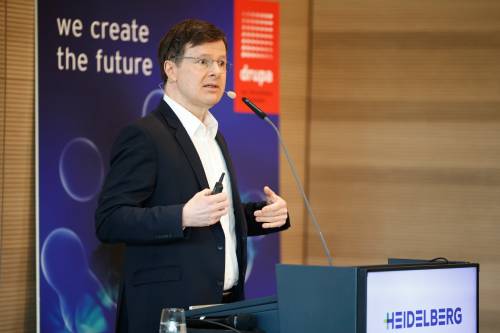
Ludwin Monz, CEO di Heidelberg, durante la Pre-drupa Media conference
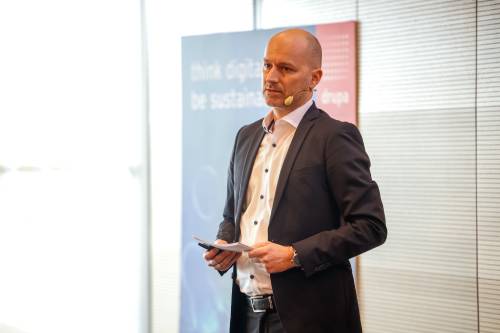
Markus Leichtle, Senior Manager Industrial Packaging
------------------------------------------------------------------------------------------------
HEIDELBERG SVELA IL POTENZIALE DELLA STAMPA
Heidelberger Druckmaschinen AG ha messo in evidenza le sfide che il settore della stampa sta affrontando: costi in costante aumento, carenza di lavoratori qualificati e crescenti requisiti di sostenibilità. In risposta a questi megatrend, il costruttore tedesco presenterà a drupa numerose innovazioni al motto di “Unfold Your Potential”, una su tutte la Speedmaster XL 106 Peak Performance di nuova generazione.
Il mondo della stampa si trova di fronte a importanti sfide, per questo l’attenzione di Heidelberg a drupa sarà focalizzata sulla necessità per le aziende di stampa di ottimizzare lo sviluppo e lo sfruttamento del potenziale commerciale utilizzando tecnologie e servizi all’avanguardia.
All’insegna del motto “Unfold Your Potential” a drupa, il costruttore tedesco presenterà diverse innovazioni, tra le quali la nuova Speedmaster XL 106, in grado di supportare i propri clienti con un concetto olistico che offre una produttività fino al 20% superiore rispetto alle soluzioni precedenti.
Ludwin Monz, direttore generale di Heidelberg, ha commentato: “Heidelberg è stata un’industria pioniera del settore nella digitalizzazione della stampa da 20 anni. Il nostro obiettivo principale è ottimizzare l’intera catena del valore dei nostri clienti. A tal fine, abbiamo quasi completamente digitalizzato i processi di stampa integrati e le nostre soluzioni a drupa offrono la massima efficienza ai clienti di stampa commerciale e packaging nella produzione industriale”.
Regina dello stand sarà la nuova Speedmaster XL 106 Peak Performance, che può stampare fino a 21.000 fogli all’ora. Con questa nuova generazione, la stampa autonoma è ora possibile anche nella produzione di imballaggi, grazie al concetto potenziato Push to Stop. Ciò significa che è possibile configurare in modo completamente automatico parametri di produzione complessi anche nella stampa di imballaggi ed etichette.
Markus Leichtle, Senior Manager Industrial Packaging, spiega: “Prevediamo che un produttore di imballaggi ad alti volumi o un produttore di etichette con colla a umido raggiungerà molto presto il traguardo di 100 milioni di fogli all’anno. Questa cifra rappresenta un aumento del 20% rispetto agli 85 milioni di fogli attualmente prodotti dagli attuali leader del settore”.
Una soluzione alla carenza di competenze
Le tipografie competono per attirare il personale più qualificato, quindi è importante rendere gli ambienti di lavoro più attraenti. Con ulteriori miglioramenti all’Heidelberg User Experience (UX) e un nuovo design ergonomico, la nuova Speedmaster XL 106 Peak Performance stabilisce standard elevati.
Il nuovo PowderStar XL (Duo) riduce il consumo di polvere fino al 15% e le emissioni fino al 45%. Inoltre, il carico sulla capacità del personale viene ridotto, poiché l’utilizzo di cluster di produzione significa che meno personale può gestire in modo efficiente lo stesso numero di macchine da stampa. Quando viene incorporato il sistema di logistica delle lastre Plate to Unit completamente automatico, è possibile risparmiare su un operatore, gestendo allo stesso tempo automaticamente fino a 150 lastre di stampa all’ora. Sostenibilità con un nuovo essiccatore a risparmio energetico Dotato di isolamento nell’uscita, di uno scambiatore di calore a flusso incrociato e di un design migliorato della cassetta dell’essiccatore, il nuovo sistema di essicazione DryStar Combination Eco utilizza fino al 30% in meno di energia per l’asciugatura. Si è calcolato che l’investimento in questo innovativo essiccatore verrà ripagato entro circa due anni, anche per i clienti europei che hanno costi dell’energia elevati. Inoltre, quando la velocità di produzione è più elevata, la macchina da stampa così attrezzata consuma meno energia per 1.000 fogli: aumentando ad esempio la velocità di stampa da 18.000 a 21.000 fogli all’ora, il consumo energetico diminuisce di circa il 4,5%.
Elaborazione dei lavori completamente automatica
Con il suo sistema di flusso di lavoro Prinect, Heidelberg porta l’automazione a un livello completamente nuovo in termini di produttività. Prinect, ad esempio, fornisce dati aggiuntivi a molti sistemi di assistenza, che lavorano sempre più con l’intelligenza artificiale. Molte funzioni di digitalizzazione nuove e migliorate, come Intellistart 3 o il sistema di assistenza migliorato Color Assistant Pro per la preimpostazione completamente automatica dell’inchiostro senza errori operativi, riducono drasticamente il numero di interventi manuali necessario. Queste funzioni consentono di risparmiare fino a quattro minuti di tempo di avviamento e tra i 100 e i 150 fogli di carta sprecata per lavoro. Se combinato con il sistema di misurazione del colore in linea Prinect Inpress Control e il sistema di uscita automatizzato, il sistema di espulsione in linea dei fogli di scarto è in grado di consegnare una pila senza scarti pronta per le operazioni di poststampa, aumentando così l’efficienza dell’intero processo.
Location
Heidelberg dimostrerà in due luoghi diversi come le aziende di stampa possono aumentare la propria capacità. Nel padiglione 1 della Messe Düsseldorf, l’azienda presenterà un flusso di lavoro end-to-end altamente automatizzato. Nella sede di Heidelberg a Wiesloch-Walldorf, l’attenzione sarà focalizzata sul potenziale commerciale dell’intero portfolio di Heidelberg.


